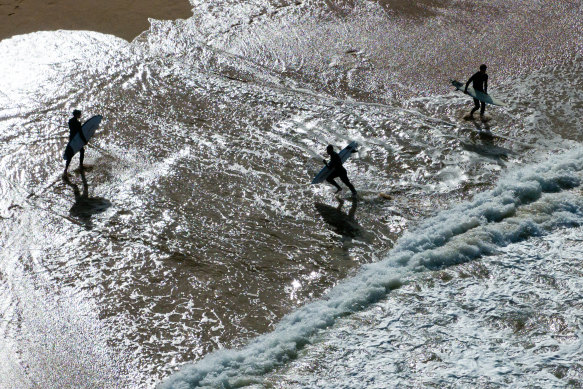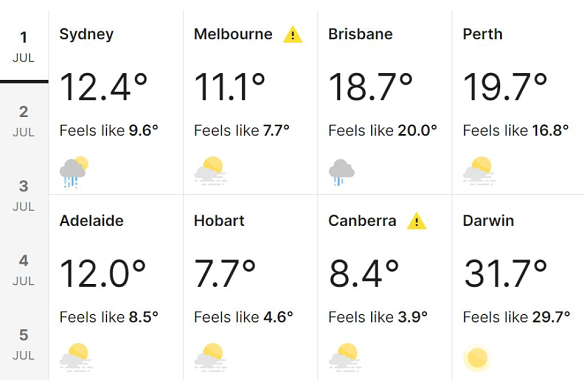By Angus Dalton
The maximum temperature tends to take top billing in any weather forecast, but there’s a problem with that number if you’re using it to decide between a puffer jacket or a skivvy.
A stark difference often lies between the actual temperature and how humans perceive that temperature as warm, comfortable or cold.
That’s why the “feels like” temperature is becoming increasingly prominent in weather bulletins.

The “feels like” temperature at a gusty beach is likely to be much lower than the actual air temperature.Credit: Nick Moir
In the upcoming redesign of the Bureau of Meteorology’s website, the feels like measure will feature almost as prominently as the actual temperature.
“Feels like temperature is how the air will feel to the human body, when factoring in relative humidity, moisture and wind speed,” the bureau’s Dean Narramore said. “The stronger the wind and the drier the air, the more heat is taken away from your body, so it feels colder and colder.”
At 7.30am on Monday at Observatory Hill, for example, the air temperature was a crisp 6.7 degrees, but the feels like temperature had plunged to zero, so out-and-about Sydneysiders would have felt freezing.
In winter, wind chill is the biggest factor behind the feels like figure. Gusts can blow away a thin layer of warmer air around our bodies that helps insulate us from the cold.
Wind speeds between 40 and 60km/h can drive the feels like temperature 10-15 degrees lower than the air temperature, Narramore said.
The bureau’s thermometers are sheltered from sunlight and wind by small huts called Stevenson screens that let air flow in through slatted sides.
But when people are out and about, we’re subject to wind, rain and humidity – not to mention we’re made of muscle, skin and blood rather than glass. Those factors have a profound effect on whether the temperature sets our teeth clattering.

The “feels like” temperature is set to feature more prominently on the bureau’s website.Credit: Bureau of Meteorology
To calculate how a temperature reading from one of these Stevenson screens will actually feel to a person, the bureau uses an equation designed by Australian scientist Dr Robert Steadman, whose PhD focused on how wind and humidity affect heat transfer through clothes.
The equation crunches together the air temperature, humidity and wind speed, and assumes a person is dressed appropriately for the weather and walking in the shade at a speed of 1.4 metres per second.
The equation doesn’t consider warmth from the sun, which can boost the feels like temperature by 8 degrees.
There are some instances when the feels like temperature lines up with the actual air temperature. If it’s 20 degrees outside, with 80 per cent relative humidity and 10 km/h winds, then it will feel very close to 20 degrees, according to Weatherzone.
Conditions where “feels like” and the actual air temperature match up
- 10°C air temperature, 100% RH, calm winds
- 20°C air temperature, 50% RH, calm winds
- 20°C air temperature, 80% RH, 10km/h winds
- 30°C air temperature, 50% RH, 15km/h winds
Narramore said winter temperatures in Sydney had been close to average in June.
“But I think it’s been a very wet, very showery month, combined with a lot of wind, which has made it feel a lot colder,” he said.
The Examine newsletter explains and analyses science with a rigorous focus on the evidence. Sign up to get it each week.